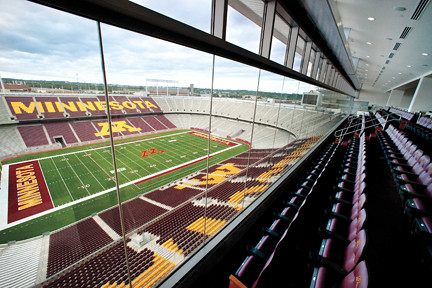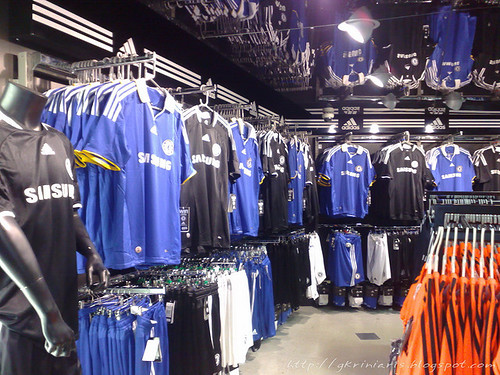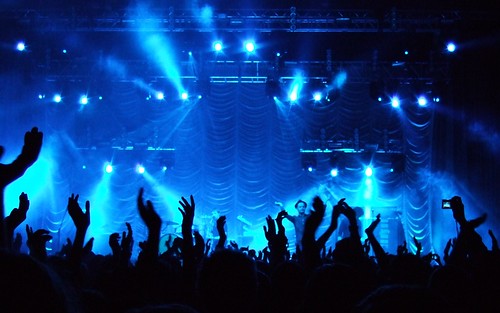Revenue management of sports stadiums are rather challenging due to several obvious reasons. Events/games are only held once a week, once a month, or even just couple times per year depending on the location and the functionality of the stadiums, which is why it is very important to implement sophisticated pricing strategies in order to maximize revenue on the days when events are held. Also, major sports teams’ stadiums are rarely rented out for purposes other than its own sports games (i.e. basketball, baseball, soccer…etc). Whereas other stadiums are used for various events such as music concerts and award ceremonies from time to time.
- Sports stadiums general info: http://en.wikipedia.org/wiki/Sports_stadium
- Stadium guides: http://www.stadiumguide.com/
There are significant differences between RM of sports stadiums compared to the more traditional sectors such as the airline industry. Whether you sit in the 10th row or the 20th row in Economy have minimal difference (there are, of course, differences between Economy and Business class). However, whether or not you sit in the far back row with limited view to the sports ground creates a world of difference to your overall experience when watching a sports game. Flying on a plane may be a part of your necessity to travel from A to B, but watching a sports game in a stadium is about the “experience,” and therefore the perceived value depending on the location of the seats vary immensely.
Implicit Use of Space
How are the space divided in sports stadiums?
- By location of seats
- Regular seats vs. Enclosed suites with multiple seats
- By supporting team

Club-level seats
What are the common sources of additional revenue?
- Souvenir shops selling team-specific sports gears
- Most of the premier league soccer teams’ stadiums have museums and tours: visitors even come to the museum on non-game days as well. High numbers of tourists visit the museums in Western European countries
- Dining places (concessions)
- By renting the space for music concerts-picture (per event)
- By holding other sports events (i.e. Olympics)
- Media access charges
- Advertisement

Chelsea Megastore within Stamford Bridge stadium

Chelsea Museum located within Stamford Bridge stadium

- Sports stadium being utilized as a concert venue
How can companies split up the space differently?
- “Quiet” vs. “Loud” seats: I noticed that some sports supporters prefer to sit throughout the game whereas some people like to stand and cheer actively for their teams. Setting aside few rows in each section to those more reserved supports may be effective.
- Create more seat classes: frequent visitors (fans) are likely to be less sensitive to the ticket price, so companies can create more club seats (even create another class between the club seats) and add more varied classes depending on the location and the view from the seats.
Implicit Use of Time
How can companies sell the space explicitly?
- Selling tickets with time limits: This strategy can be very attractive for tourists visiting well-known stadiums or important games such as the World Cup. It would work quite well especially for soccer games. For example, customers will buy tickets for the first-half or and second-half o f the game which will be 45 minutes each. If the full-time ticket is $80, companies can charge $50 for customers purchasing 45-minute tickets.
- Companies can sell a specific seat at a certain stadium by year, month, or season (leasing private seats)
Price
What are the physical rate fences in sports stadiums?
- Location of the seat: proximity or the angle of the view to the sports ground
- Rates for suites differ based on the physical size of the space (maximum capacity): http://www.executiveclub.manutd.com/en.aspx (You’ll notice that almost all executive suites are sold out for this season despite the high rates)

What some of the non-physical rate fences?
- Purchases of tickets via third party sellers: http://www.worldticketshop.com/tickets/chelsea_tickets
- On-line vs. Ticket office purchases
- Club Membership status
- Season ticket holders
- Importance of events: For example, the average seat price for premier league games are more expensive compared to championship league games
- Performance of the teams
- Stadium’s location (accessibility) and the age of the facilities
How can companies generate additional revenue by using creative rate fences?
- Implement bundle selling: price per seat would be more expensive when purchasing one ticket compared to purchasing two or more tickets
- Early reservations should be entitled to discounts
- I believe that companies can start utilizing extensive Customer Relations Management (CRM) in the sports industry by using the personal data gained via increase in on-line ticket purchases and use direct marketing. Companies should implement other rate fences possibly based on the different personalities and characteristics of the customers.
- Companies can upsell those customers reserving suites by offering extensive catering options & extended time before and after the game for extra fee (most stadiums offer the suites per event currently)
- When the time gets closer to the actual day of the game, odd 1 seats that are left in between other reservations can be sold at more friendly rate


Thanks for this amazing article. I think you should write an article about bagging machine manufacturer this will be very helpful.
I have more free time to Rental Mobil Mingguan rewatch lectures and make sure I absorb the material
Artikel ini benar-benar menggugah pemikiran. cuci mobil premium
Poin-poinnya sangat relevan, terima kasih. penerjemah dokumen
Gaya penulisan yang menarik membuat saya terus membaca. Bagus sekali! Jasa Pembasmi Rayap Jakarta
Saya suka bagaimana Anda menyajikan data ini. prosedur jasa penerjemah
Pembahasan tentang [topik] sangat relevan dengan kondisi saat ini. Terima kasih banyak. Bahaya Penyakit Filariasis
luar biasa, sangat menarik sekali~ Conveyor Belts Sersan 4 Ply BW 500
and I don’t spend all of Rental Hiace Bandung my time worrying about classes.
Materi yang dibahas sangat lengkap dan mendalam. harga hidrolik mobil
Saya suka bahwa Anda memberikan solusi praktis untuk setiap masalah yang dibahas. Jasa Anti Rayap Termite Control
Terima kasih atas pandangan yang berharga. manfaat penerjemah
website yang unik Conveyor Belts Sersan 4 Ply BW 600
Informasinya sangat akurat dan terbaru. Terima kasih telah memberikan wawasan terkini. Tukang Basmi Rayap
Sangat informatif, saya suka penjelasan singkatnya. jasa penerjemah profesional
saya akan menyarankan web ini kepada kerabat Conveyor Belts 2 Ply BW 400
pg slot
Great content material and great layout. Your website deserves all of the positive feedback it’s been getting. 數學補習
Excellent article. Your writings are unique, simple to grasp, and include beneficial and motivating content. Continue your wonderful effort! From:
rtg arrowana
Great post! You’ve done a great job covering the topic and offering insightful commentary. Thank you for taking the time to provide this information. Keep it up and visit us Backfill services in langley for gather more details
Nice post
Check me out
Best Citizenship servcies in kelowna
Thanks for sharing an awesome detailed blog
Keep it up and visit us
Affordable Drywall services in surrey
Informasinya sangat penting untuk diketahui. hidrolik cuci mobil harga
Tulisannya sangat informatif, saya suka. penerjemah ijazah
Studying in England has Liburan Keluarga helped me develop a better school-life balance.
Informasinya sangat bermanfaat, terima kasih banyak. penerjemah bahasa inggris resmi
Artikel yang sangat informatif! Saya jadi tahu lebih banyak tentang topik ini. Terima kasih atas pembahasannya. Bahaya Hama Rayap
saya suka, tulisannya ringkas dan jelas DURABELT EP125 Rubber Conveyor Belts 2 Ply BW 500
Saya suka bagaimana penulis memberikan contoh. cuci mobil terdekat 24 jam
Thanks for sharing this helpful information! I’m excited to check out some of your articles on your future posts.
you may also visit my website.
https://pinoyswertreshearing.com/jackpot368-register-now-claim-huge-bonus/
Studying in England has Liburan Bersama Keluarga helped me develop a better school-life balance.
row with limited liburan musim panas view to ground creates a world of difference
sports stadiums compared to sectors such as the airline
sungguh bermanfaat sekali DURABELT EP125 Rubber Conveyor Belts 2 Ply BW 600
Tulisan yang luar biasa, saya suka. penerjemah bahasa mandarin tersumpah
Very good written article. It will be supportive to anyone who utilizes it, including me. Keep doing what you are doing – can’r wait to read more posts. smihub
You have a real ability for writing unique content.I like how you think and the way you represent your views in this article.I agree with your way of thinking.Thank you for sharing.numlooker
Thank you for another great article. Where else could anyone get that kind of information in such a perfect way of writing? I have a presentation next week, and I am on the look for such information.readcomiconline
Your article has piqued a lot of positive interest.I can see why since you have done such a good job of making it interesting.livebeam
Penjelasannya sangat jelas, terima kasih. syarat penerjemah
Wow, penjelasannya sangat jelas dan mudah dipahami. Sangat membantu bagi saya yang baru memulai di bidang ini. Jasa Pembasmi Rayap
On a normal day, I work on Rental Mobil di Bandung assignments from 9 a.m. to 3 p.m
mantap, ini yang saya butuhkan DURABELT EP125 Rubber Conveyor Belts 2 Ply BW 800
Artikel ini membuat saya lebih termotivasi. harga detailing mobil
Saya akan membagikan ini dengan teman-teman saya. syarat penerjemah
Wow, penjelasannya sangat jelas dan mudah dipahami. Sangat membantu bagi saya yang baru memulai di bidang ini. Anti Rayap Pest Control
I’m thoroughly engrossed in your article! It’s expertly composed and incredibly impactful. Your ability to connect with readers on an emotional level and inspire them to take action is truly commendable. Well done on such an outstanding piece of writing! cek my page here 7 Cara Membuka Akun Slot yang Terkunci Tanpa Hambatan!
Terima kasih telah memberikan perspektif baru tentang topik ini. sworn translator jakarta
This is such awesome content i got to read after lot of time. Its so interesting as well as informative. I am sure everyone who read it got a lot to learn from it.Sherlock Holmes Coat
Your College Sensei helps students graduate fast and debt-free, earn better grades, save money, and launch their dream careers! Scholarships